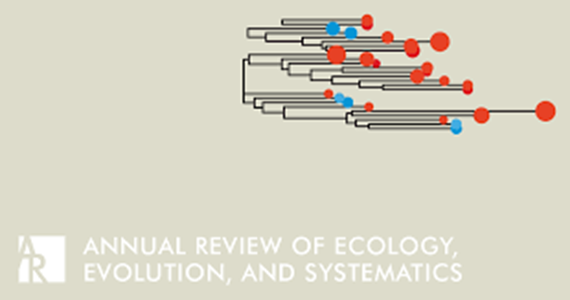不断变化的北极地区的挥发性有机化合物排放量
IF 11.2
1区 生物学
Q1 ECOLOGY
Annual Review of Ecology, Evolution, and Systematics
Pub Date : 2024-08-07
DOI:10.1146/annurev-ecolsys-102722-125156
引用次数: 0
摘要
长期以来,人们一直认为北极生态系统是大气中挥发性有机化合物(VOCs)的最小来源,因为其植物生物量低且气温寒冷。然而,这些生态系统经历了迅速的气候变暖,改变了植被组成。苔原植被挥发性有机化合物排放对温度的依赖性比目前的排放模型估计的更强。因此,气候变暖可能会直接或间接(通过植被变化)增加北极生态系统中异戊二烯、单萜烯和倍半萜烯等植物挥发物的释放量,并改变这些挥发物的混合。气候变化还增加了背景食草动物和昆虫爆发的压力。由此造成的叶片损伤会诱发挥发性防御化合物的产生,而气候变暖会放大这种反应。土壤既是挥发性有机化合物的源,也是挥发性有机化合物的汇,解冻的永久冻土是土壤挥发性有机化合物排放的热点,如果挥发性有机化合物绕过微生物的吸收,就会增加生态系统的排放。总之,北极地区的挥发性有机化合物排放量在未来可能会增加,并对生态相互作用和大气成分产生影响。本文章由计算机程序翻译,如有差异,请以英文原文为准。
Volatile Organic Compound Emissions in the Changing Arctic
Arctic ecosystems have long been thought to be minimal sources of volatile organic compounds (VOCs) to the atmosphere because of their low plant biomass and cold temperatures. However, these ecosystems experience rapid climatic warming that alters vegetation composition. Tundra vegetation VOC emissions have stronger temperature dependency than current emission models estimate. Thus, warming, both directly and indirectly (via vegetation changes) likely increases the release and alters the blend of emitted plant volatiles, such as isoprene, monoterpenes, and sesquiterpenes, from Arctic ecosystems. Climate change also increases the pressure of both background herbivory and insect outbreaks. The resulting leaf damage induces the production of volatile defense compounds, and warming amplifies this response. Soils function as both sources and sinks of VOCs, and thawing permafrost is a hotspot for soil VOC emissions, contributing to ecosystem emissions if the VOCs bypass microbial uptake. Overall, Arctic VOC emissions are likely to increase in the future with implications for ecological interactions and atmospheric composition.
求助全文
通过发布文献求助,成功后即可免费获取论文全文。
去求助
来源期刊
CiteScore
19.90
自引率
1.70%
发文量
21
期刊介绍:
The Annual Review of Ecology, Evolution, and Systematics is a scholarly publication that has been in circulation since 1970. It focuses on important advancements in the areas of ecology, evolutionary biology, and systematics, with relevance to all forms of life on Earth. The journal features essay reviews that encompass various topics such as phylogeny, speciation, molecular evolution, behavior, evolutionary physiology, population dynamics, ecosystem processes, and applications in invasion biology, conservation, and environmental management. Recently, the current volume of the journal transitioned from a subscription-based model to open access through the Annual Reviews' Subscribe to Open program. Consequently, all articles published in the current volume are now available under a CC BY license.

 求助内容:
求助内容: 应助结果提醒方式:
应助结果提醒方式:


